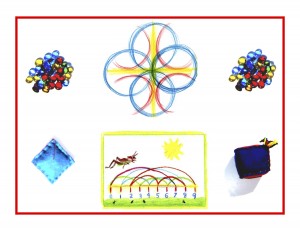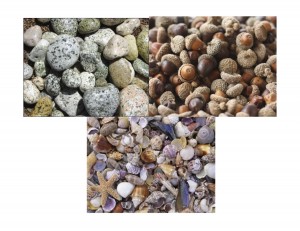Day 15
For one year, 365 days, this blog will address the Common Core Standards from the perspective of creating an alternate, ambient learning environment for math. Ambient is defined as “existing or present on all sides, an all-encompassing atmosphere.” And ambient music is defined as: “Quiet and relaxing with melodies that repeat many times.”
Why ambient? A math teaching style that’s whole and all encompassing, with themes that repeat many times through the years, is most likely to be effective and successful. Today’s blog will focus on Kindergarten Standard 3, in Measurement and Data. Note that the Common Core Standards will appear in blue, followed by an ambient translation.
Measurement and Data K.MD
Describe and compare measurable attributes.
3. Classify objects into given categories; count the numbers of objects in each category and sort the categories by count.
If we believe that early childhood should be filled with wonder and imaginative play, the traditional 3 R’s (reading, ‘riting, ‘rithmetic) may not have a place in the Kindergarten. We could substitute these 3 R’s: rhythm, repetition, reverence. Children do better with rhythm as a staple of their days and nights, and the child before age 7 is especially in need of it.
Regular mealtimes and bedtimes are only part of the picture. The young child thrives in a predictable environment. Sameness is not boring here, and repetition is key. Waldorf Kindergartens adhere to a schedule that’s reminiscent of the nursery rhyme/song that goes, “Monday’s the day we wash our clothes . . .” Each day of the week has its special focus: Monday might be soup day, and Tuesday bread day, etc.
The content of morning circle and story time are also rhythmically repetitive. The morning circle consists of the same songs, verses, and movement for two weeks, so they can be thoroughly learned by heart. And the same fairy tale is told for those two weeks as well. In the Kindergarten, stories never lose their magic, but become more so every time they’re told.
Reverence is apparent in the way the children are held: in sacred trust. Trust that this is right for them, against all odds of academic pushing down to younger and younger ages. Rudolf Steiner said, “Receive the child in reverence, educate her with love, and let him go forth in freedom.” A truly free education must first and foremost respect and revere the kingdom of childhood.
When any teaching is connected to something else, like a story, a picture, movement, or nature, for example, it fits the child. S/he gets it. But more importantly, it pieces the modern world back together to wholeness. The fabric of life is not ripped up into abstract standards and learning outcomes, but is a healthy, nurturing part of life.
On to today’s standard. This could easily be done using your and your child(ren)’s nature collections. Children naturally love to sort, categorize and make order out of chaos. Have them do just that with several collections by mixing the contents of some of your baskets (i.e., acorns, shells, and stones) and providing 3 empty baskets for sorting. If you vary the number of each, the different amounts will very naturally be apparent.
You could take this a step further and make a connection with a story. Many fairy tales have this common plot: three siblings go out into the world and one of them (usually the youngest) is considered foolish and silly, not able to make his/her way in the world. S/he is also usually fond and protective of the creatures encountered on their journey. The siblings are tested, and often the test involves sorting, counting, or otherwise being aware of numerous objects. This lesson could be tied in to the sorting and counting aspect of a story.
In any case, keep it low key and play oriented. A math corner could be set up with materials that encourage this sort of purposeful play. Knowledge ensues in an environment dedicated to imaginative, creative knowing, where student and teacher alike surrender to the ensuing of that knowledge as a worthy goal. More Kindergarten tomorrow!













